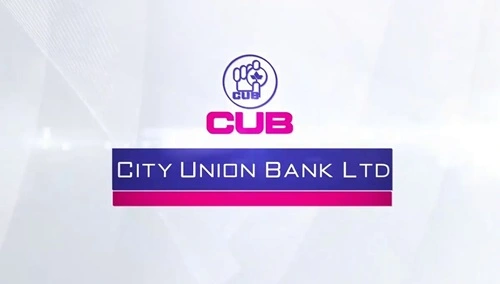City Union Bank (CUB), a century-old private-sector bank headquartered in Kumbakonam, has carved a distinct niche as a conservative, retail-focused regional bank with steadily improving financials. Entering 2026, CUB’s story is one of measured growth — improving profitability, stable asset quality and deliberate digital adoption — while managing pressures on funding mix and the need to scale fee income. This SWOT unpacks those strengths, flags the weaknesses, points to realistic opportunities and highlights the risks that could shape CUB’s near-term trajectory.
City Union Bank Overview: (CUB)
 City Union Bank
City Union Bank
- Founded / HQ: 1904, Kumbakonam, Tamil Nadu.
- FY25 / Q1 FY26 highlights: Reported FY25 net profit ~₹1,123.6 crore; Q1 FY26 annualised net profit run-rate reported in investor deck as ₹11,236 crore (note: investor presentation shows consolidated metrics and growth snapshots).
- NIM (Q1 FY26): ~3.54–3.60% (stable).
- Asset quality (Q1 FY26): GNPA ~2.99% (improved sequentially); PCR about 79% (including technical write-offs).
- CASA (Q1 FY26): ~27.3% (down from prior quarter).
- Network & reach: ~800+ branches and growing retail footprint with plans to add branches.
Strengths
1. Conservative, retail-first franchise
CUB’s focus on retail, MSME and small-ticket lending gives it a sticky deposit base and lower corporate concentration risk compared with large universal banks. That bias supports steady NIMs and predictable cash flows.
2. Improving profitability and operating performance
The bank has reported a notable uplift in operating profit and net profit trends into FY25 and Q1 FY26, with management highlighting improved core income and controlled opex. A NIM near 3.6% underlines margin resilience.
3. Tight asset quality and higher provision cover
GNPA has been trending down and the bank carries a healthy PCR (including technical write-offs), giving it a buffer against fresh slippages and supporting confidence in reported results.
4. Strong regional brand & last-mile reach
With deep roots in Tamil Nadu and southern India, CUB benefits from customer loyalty, strong micro and SME relationships, and localized credit knowledge that national players find expensive to replicate.
Weaknesses
1. Pressures on CASA and funding mix
CASA has slipped to the high-20s percentage, which raises the bank’s reliance on term and market deposits. Sustaining low-cost liabilities will be necessary to protect margins as competition for retail deposits heats up.
2. Scale constraints vs large private banks
While profitable, CUB remains a mid-sized bank. Its smaller scale limits product breadth and national distribution compared with India’s largest private banks, which can weigh on fee income growth and cross-sell potential.
3. Fee-income and treasury dependence
Other income has helped recent results, but a larger share of non-interest revenue through cards, bancassurance and transaction banking is needed to smooth earnings across cycles.
Opportunities
1. MSME & retail expansion in under-penetrated markets
CUB’s granular branch network positions it well to grow MSME credit and secured retail loans (home loans, LAP), which would diversify the asset mix and lower volatility.
2. Digital acceleration and partnerships
Management has flagged digital product rollouts and the bank has showcased new payment solutions. Accelerating digital onboarding, partnering with fintechs and building a stronger card/payments franchise can lift low-cost acquisition and fee income.
3. Targeted wholesale & co-lending tie-ups
Access to development finance (recent IFC commitment) and co-lending programs can help CUB scale priority verticals like green MSME financing without over-levering the balance sheet.
Threats
1. Competition for deposits & margin squeeze
Larger private banks and digital challengers are aggressively pricing to gain CASA; continued erosion in low-cost deposits would pressure NIMs.
2. Macro stress hitting MSMEs
An economic slowdown impacting small businesses or regional sectors could trigger slippages given CUB’s focus on retail and SME segments.
3. Execution risk on digital rollout
Delays or missteps in product launches and tech integration could increase costs without immediate revenue pick-up, denting ROA and customer satisfaction.
4. Market & funding volatility
Any sharp dislocation in wholesale markets or investor sentiment could make term funding costlier just when the bank seeks to expand.
Conclusion
City Union Bank enters 2026 from a position of relative strength: solid margins, improving asset quality and a loyal regional franchise. The next leg of value creation will come from restoring CASA momentum, scaling digital-led fee businesses, and judiciously growing MSME and secured retail loans — ideally using co-lending and external lines (such as the IFC commitment) to share risk. If CUB executes on these fronts while keeping credit discipline, it can convert regional leadership into a sustainably higher, less volatile return profile. If not, funding and competitive pressures could cap upside.


